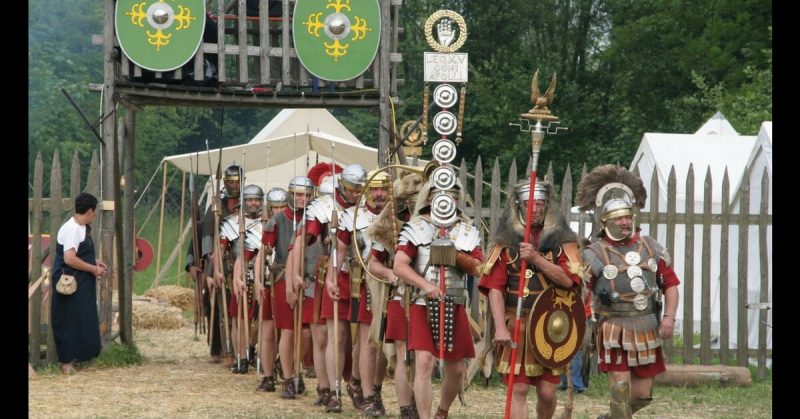The military camp is one of the most iconic symbols of Roman martial prowess.
The armies of Rome were not just made up of warriors. They also contained skilled engineers, with every legionary able to work on construction. It was how they were so successful in siege warfare. It enabled them to build networks of communication, supply, and defenses that spanned the length and breadth of Europe.
Frequently used and quickly assembled, the military camp was the ultimate expression of this combination of military engineering and mass labor. Thanks to an account from the 2nd century BC, we have a good idea of how they were run.
The Importance of the Marching Camp
Roman armies often operated in a hostile country. From the height of the Republic through to the middle years of the empire, they were busy expanding the territories of Rome. They dealt with revolts and threats beyond their borders through conquest such as the 1st century AD Iceni uprising in Britain.
To keep safe while moving through hostile terrain, a legionary army built a fortified camp at the end of each day’s march. The Roman equivalent of modern troops digging in, these camps were carefully planned and constructed, following set patterns. They helped to organize as well as defend the encamped forces, with each part of the army knowing its place within the camp.
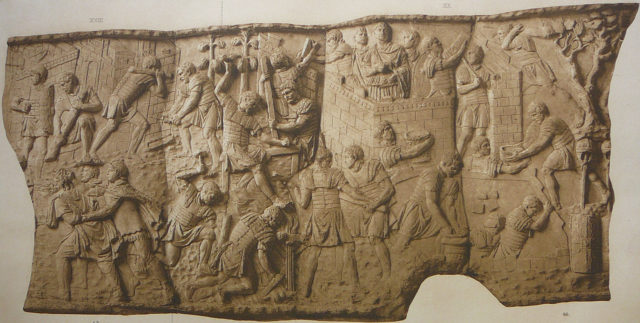
The importance of these defensive positions was highlighted in Gaul in 57 BC when the Nervii and their allies attacked the Romans while they made camp. Caesar’s troops had to abandon their work, snatch up their weapons, and fight for their lives.
Making Camp
The process of establishing a camp began while the army was still on the march. A survey unit of a Tribune and several centurions went ahead to look for the right place. It had to be open and with enough space for a 700-meter square encampment. If located near an enemy, it was about four kilometers away from their position, with a water source opponents could not divert or foul up. For defensive purposes, it was built on rising ground, in an area without cover for the enemy to use.
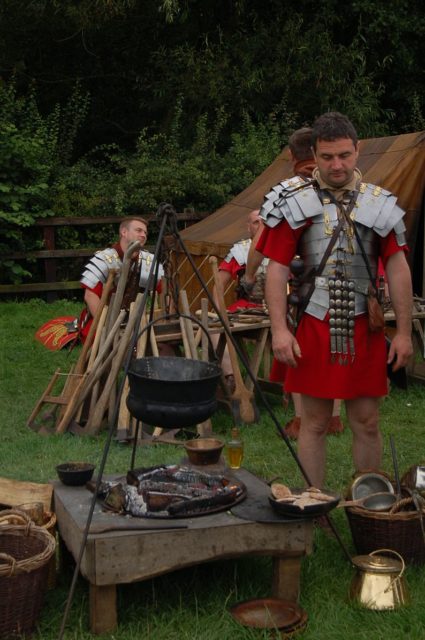
Once a site had been selected, the surveying team marked out the camp. A white flag marked the position for the commander’s tent. A red flag marked the side nearest the water source. Camping areas, walls, and roads through the camp were marked out.
Once the legionaries arrived, they set about construction. Each maniple was given around 25 meters of ditch and wall to prepare. Units carried a selection of tools between them, and each soldier carried a bundle of sharpened stakes used to form a fence.
If an enemy were nearby, troops were set to keep guard and defend the camp.
The rest of the men dug a three feet deep ditch, used the earth to build a rampart, and set up a fence or barricade on the top. Only then could they rest for the night.
Life in Camp
Once the camp had been built, everybody gathered together. The inhabitants of the camp swore the camp oath; a vow not to steal and to report anything they found. Then they set up their tents for the night. One group was tasked with setting up the tent for the commander and the area around it.
While in camp, guards were set in various places. Some guarded the commander’s tent and kept the area around it in order. Some guarded the horses. Others guarded the supplies. There were general guard patrols, watching for any approaching enemies or trouble within the camp. Each unit also set its own sentries.
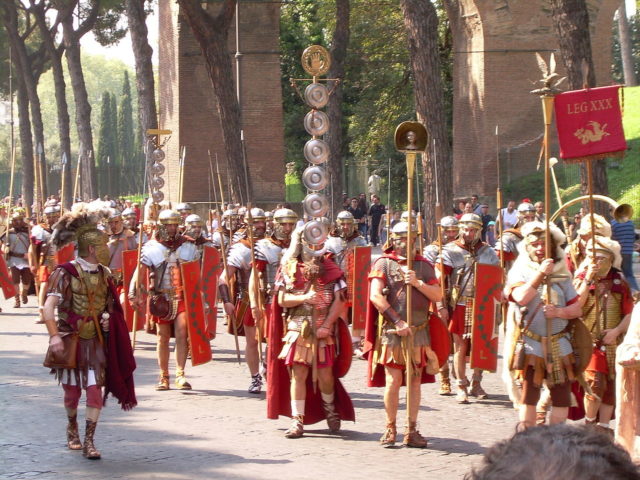
As dusk arrived, four officers went to the commander and received wooden tablets carrying that night’s password. These were passed from officer to officer in a set pattern until everyone knew the password and then the tablets were returned. The structured passing on of these tablets in front of witnesses meant if one went missing then it would be possible to work out who had lost it and to punish them.
In camp for the night, the soldiers carried out the tasks common to any army on the march. They cooked and ate, cleaned and maintained their equipment, entertained themselves and slept. With many guard patrols and other duties to fulfill, it was a busy life, even in a camp only built for one night. If the army stayed for longer, there would be more construction work, improving the defenses.
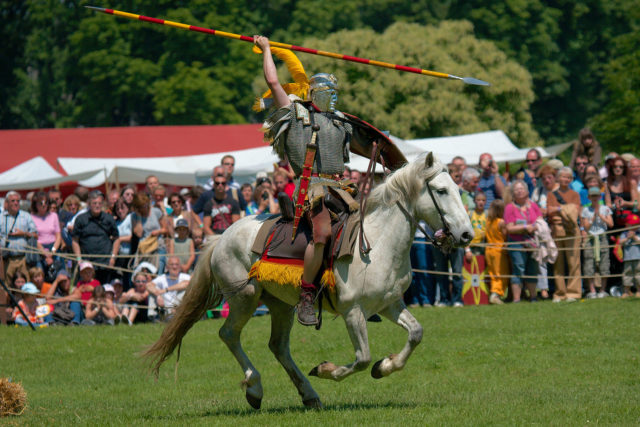
Breaking Camp
In the morning, a horn blast announced the start of the day. Guard patrols gave their reports on anything seen in the night. A strong cavalry patrol was sent out to scout the surrounding area and establish what an enemy was doing.
With this intelligence, the commander called a council of war containing his officers. There he could seek their advice on what to do next. Was it time to engage the enemy, to sit still, or to keep marching? This council was purely advisory, and the decision was his.
Meanwhile, soldiers sat outside their tents, eating breakfast surrounded by their equipment.
A second horn blast announced when it was time to pack up camp. Legionaries took down their tents, packed their bags and the equipment of their senior officers. Anything not carried by the soldiers was loaded onto mules.
A third horn blast told them to fall in. The layout of the camp made leaving easy. By exiting in a set order, the legions could make a smooth and orderly departure. With so many troops, it took hours to empty a camp.
They were on the road again, heading for their next site.
Source:
Kate Gilliver, Adrian Goldsworthy and Michael Whitby (2005), Rome at War: Caesar and his Legacy.
Adrian Goldsworthy (2003), The Complete Roman Army.
General Sir John Hackett, ed. (1989), Warfare in the Ancient World.
